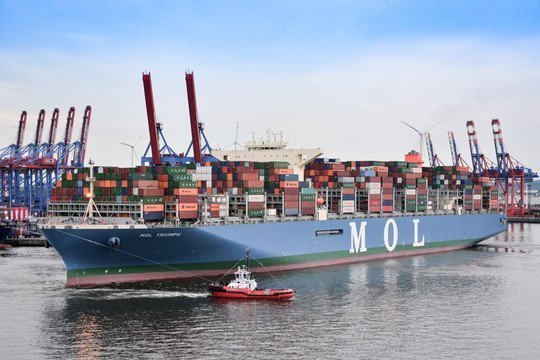Pioneering VDR test brings MOL a step closer to operating ships remotely

Japan’s Mitsui OSK Lines (MOL) said today pioneering work with a voyage data recorder (VDR) on one its ships had given the company a “major step toward future remote vessel operation technology”.
MOL teamed up with Japan Radio Co and JSAT Mobile Communications in building a network that shares data recorded in a VDR by using Fleet Xpress provided by Inmarsat.
In the past, VDR data was accumulated in its main unit onboard, so the data had to be stored in secondary storage such as a hard disk drive and mailed to offices on shore. This meant shore-side personnel could not access this data during the voyage. And varying postal systems at ports around the world made it difficult to get data on a timely basis.
MOL conducted a VDR tracking test with one of its operated vessels, and confirmed the network can receive and monitor VDR-collected information related to various nautical instruments and the main engine of the vessel, and determine the movement of the vessel on the nautical chart by transferring the data to ECDIS. Moreover, past data recorded on VDR can be acquired ashore whenever needed by using satellite telecommunications.
In terms of how MOL would like to use this technology going forward, the owner said determining the current navigation status of the vessel allows deeper support from ashore, which in turn enhances operating safety.
In case of an emergency or a marine incident, the data on the vessel’s movement from the time the incident occurred can be reproduced in the land-based ECDIS, and voice transmissions and radar images can be confirmed.
The information can be provided to concerned parties swiftly and accurately, in an environment that allows for immediate grasp of the sequence of events related to the incident. This also allows the cause of the incident to be determined more quickly.
“MOL positions this success as a major step toward future remote vessel operation technology, having set its sights on expanding its use to every MOL-operated vessel, and continues research aimed at refining the concept of ‘visualization at sea’,” the company said in a release today.

In terms of automated ships this makes no sense at all. A VDR is by definition recorded data and therefore old data. Real time data direct to the shore and cloud is the general direction of the future. With real time analysis being done on board in pre processing and anomalies being detected and acted upon on board.
Further data analysis and actionable data will be available in the cloud or office systems.
At best here we have post voyage analysis of an incident and that is far from the concept of remote operations and real time operations.
VDR is a defunct way to approach this.